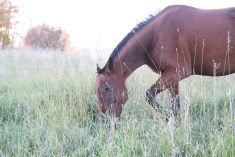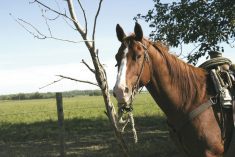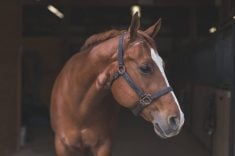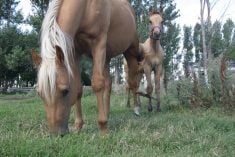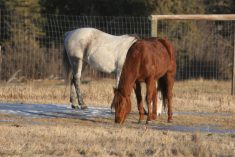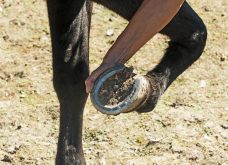Glacier FarmMedia – Neck pain in horses, particularly at the base of the neck, is getting more attention from equestrians and veterinarians, probably because we have better diagnostic imaging tools to diagnose problems.
The horse world now has access to improved radiographic techniques, ultrasonography, nuclear scintigraphy and, the most notable contributor, MRI technology. The latter allows us to detect a broad scope of pathologies around the neck that were previously overlooked.
We are now more aware of the essential role neck health plays in a horse’s overall well-being and are better able to watch for symptoms indicating the neck is compromised. Improved handling methods focused on the head and use of headgear, especially in ridden horses, are now recognized as significant factors that affect neck health and function.
Read Also
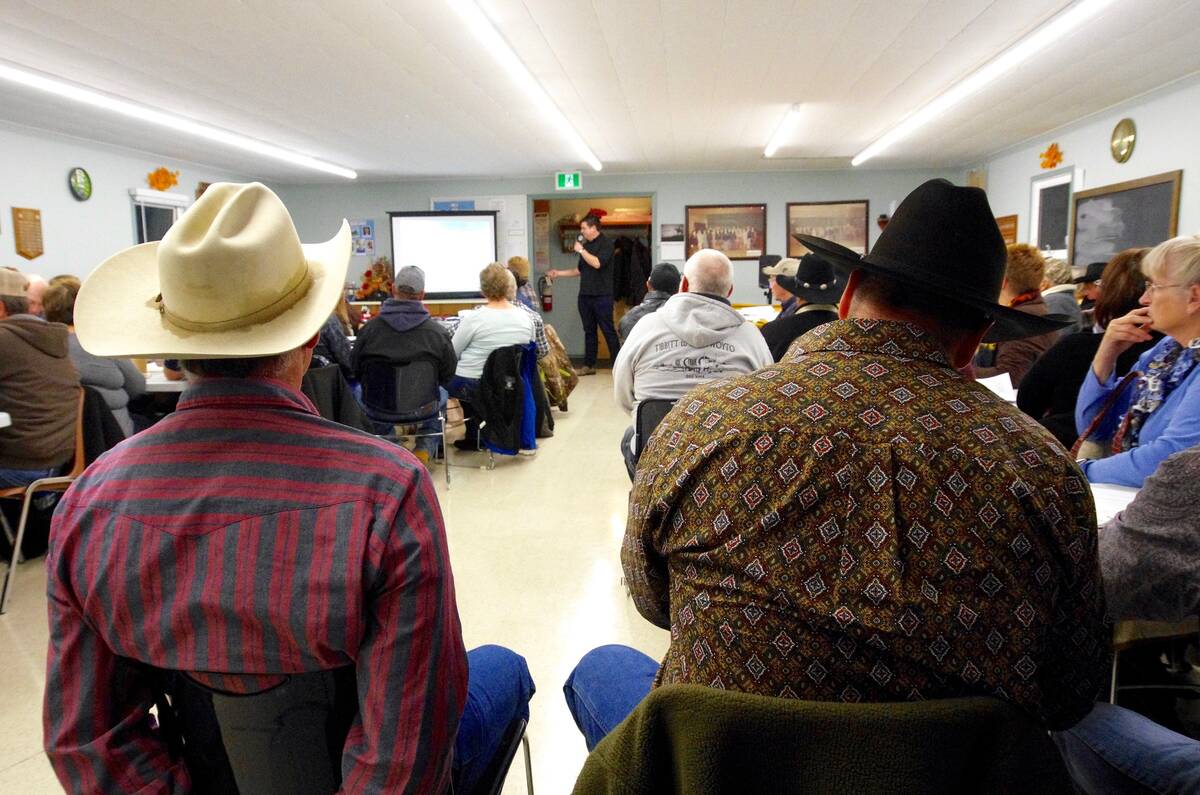
Don’t blow off that beef producer meeting
Local veterinarians and livestock experts often speak at beef producer group events. They have good advice for the farmer on vaccines, calving, beef herd management and more.
Head first
From the initial stages of haltering to advanced training, a horse’s headgear serves as a channel for communication between the animal and handlers or riders. When used knowledgeably, this gear can help us influence and improve the horse’s movement and release tension from the horse’s body.
When misused, however, stress and tension-filled interactions between humans and horses, especially when combined with the leverage from headgear, can apply harmful force to the horse around the base of the neck. This leads to limitations and tightness in this critical area, affecting neurological and musculoskeletal systems and affecting the horse’s entire body, health and function.
The significance of the base the neck, where cervical vertebrae meet the thoracic spine (in veterinary terms, the C7 to T1 vertebrae), is often underestimated. In its healthy state, this area is highly mobile. This mobility is essential for the horse’s balance, agility and overall soundness, particularly when ridden.
Proficient movement and a horse’s self-carriage hinge upon the smooth and fluid transfer of forces generated by its hindquarters. As these forces ripple through the complex networks of muscle chains and fascia along the horse’s back, they are channeled into the elastic tissues of the thoracic sling and front legs.
Here, they are converted into upward force. This is necessary for elevating both the base of the neck and the forehand of the horse. It’s essential to co-ordinate this force through structural correctness to achieve that upward lift and, ultimately, position the horse favourably on its forehand. This can only happen if the base of the neck remains mobile and unhindered.
If it is restricted or handled forcefully, the horse’s ability to use this sophisticated network of elastic myofascial tissues is compromised. The horse will be heavy on its forehand, a condition known as “falling on the forehand” among horsemen.
A horse with this body position is at heightened risk of injury. When hindquarter forces encounter this type of ”kink” at the base of the neck, the forces reverberating improperly through the body can cause structural damage. This is not limited to neck pain; the disruption affects the neurological pathways at the base of neck, impacting forelimb movement and also respiratory and digestive function.
Finding the problem
Early detection of neck issues requires keen observation. Initial signs may include changes to the appearance of neck muscles, such as muscle wasting or atrophy. In addition, less fluid movement of the head and neck (which is naturally observed in horses while walking) may indicate a problem.
As discomfort, pain and dysfunction worsen, the horse may visibly brace and guard its neck, resulting in alterations to its head and neck carriage. This becomes apparent through rigidity, stiffness, upright head position and reluctance to turn the head.
As problems advance, the horse may display a lack of co-ordination or previously unidentified forelimb lameness. Behavioural issues, such as head tossing, refusal, bucking, rearing, sudden spooking or sensitivity to handling, grooming or tack, can emerge unexpectedly. Horses might also exhibit more subtle signs such as poor performance or mysterious gait abnormalities.
Fixing the problem
Rehabilitating neck problems in horses is a complex task that demands a comprehensive approach.
Considerations should include the environment, stress levels, proper tack fit, dental and foot balance and assessment of handling and rider techniques and disciplines. Targeted treatments for pain management, chiropractic care and acupuncture will further improve outcomes.
Ensuring the future well-being of young horses involves proactive measures, such as providing proper nutrition to support optimal growth. Minor growth disturbances, especially those affecting the lower cervical vertebrae due to developmental bone diseases, can raise the risk of neck issues as young horses mature and begin training.
Once training starts, it’s essential to prioritize prudent head handling and the appropriate non-forceful use of headgear. This promotes healthy function at the base of the neck, preventing structural issues and safeguarding the horse’s long-term health.




